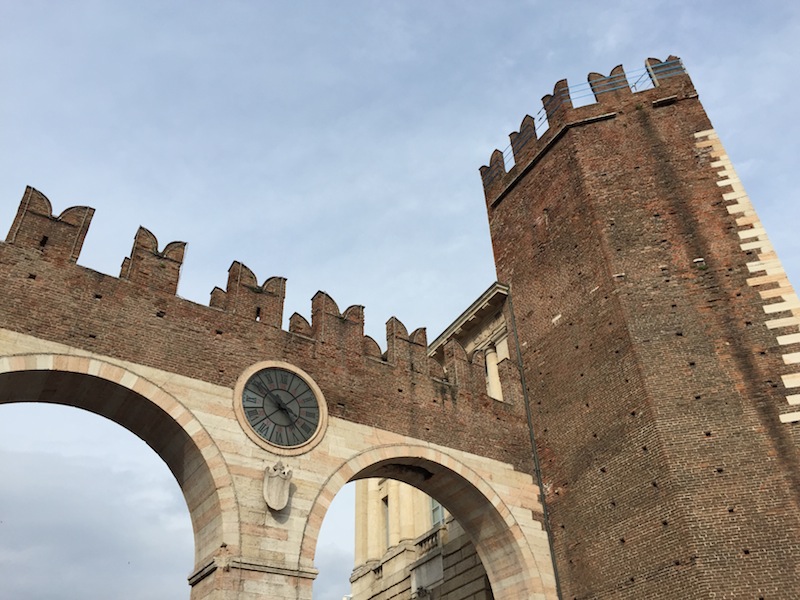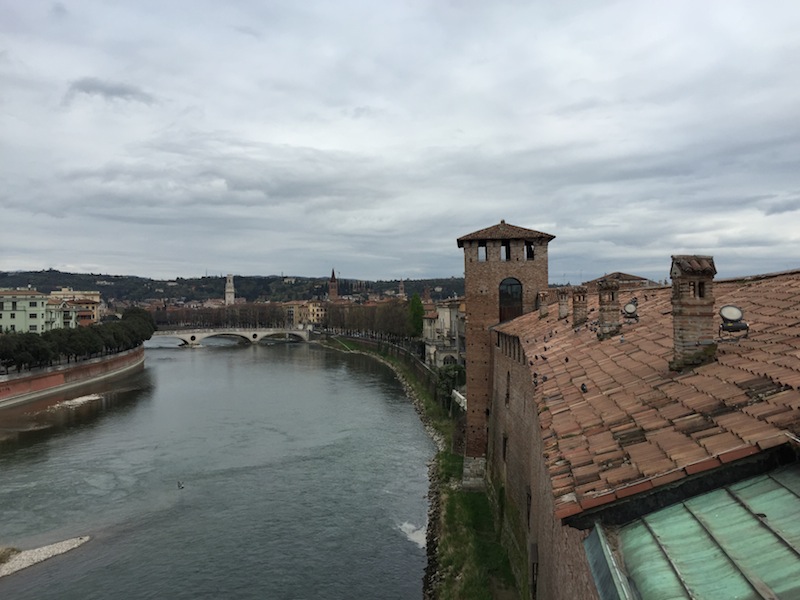Italy may change but some things remain resolutely the same. The food is great, the architecture is awe-inspiring and the locals can’t resist a shiny puffer jacket.
On our first evening in Verona, nursing a beer in a touristy but quiet bar in the Piazza Bra, there were plenty of puffer jackets on display. Veronese and visitors promenaded. There was a chill in the air and I was grateful for the environmentally unfriendly heaters that kept us warm. Perhaps I should’ve bought my puffer jacket…
The people-watching may have been good but the piazza itself has other attractions. It’s dominated by the Roman arena, an amphitheatre that’s a remarkable survivor of earthquakes, wars and all the other corrosive effects of time. It was lit up that evening.

We’d popped out for a quick drink having arrived mid-evening, on a packed BA flight from Gatwick, taking the shortish walk from the Best Western Hotel Firenze on the edge of the old town.
It was an Easter weekend, a busy one in Verona and in our hotel’s breakfast room the following morning. A fat family – who we later discovered were staying nextdoor to us – hoovered up food and shortened their lives by a couple more years. For them, for us and the Firenze’s other residents, the wide boulevard that is the Corso Porta Nuova was the main route into the pedestrianised Piazza Bra. So we joined an army of people on its marble-dressed pavements for the walk into the historic centre.

We dodged left after the Portoni della Bra, the gate into the square that’s notable for housing a giant clock, and made for the Castelvecchio. This imposing red brick castle (with yet another clock) lies by the River Adige, and was built by the powerful Scaliger family in the middle ages.
Much of what’s visible now is the result of extensive restoration and there’s an interesting post-war extension that appealed to the retro fan in me. However, it also hosts a museum with galleries full of religious sculptures and paintings and if there’s one thing that leaves me cold, it’s a museum full of religious sculptures and paintings. We rushed through, getting increasingly depressed and appalled at the volume of Jesus-themed crap on display, until we got to the battlements and the impressive keep that dominates the castle. The views were fine, and out on the horizon the snow-capped Dolomites sat beneath a blanket of white cloud.

The castle’s bridge, the Ponte Scaligero, was another highlight, and we clambered over its battlements to take photos.
We left the castle for the neighbouring Gavi Arch, which sat astride an ancient segment of Roman road, complete with stones carved by countless cart wheels, and then walked up along the Corso Cavour past grand palazzos. As we passed under the limestone-faced Porta Borsari, built in the 1st century AD, we entered a maze of historic, narrow streets and the real heart of the old city, a UNESCO World Heritage Site.
The streets were busy with people but largely free of traffic, home to fancy shops, cafes and restaurants. We turned into Piazza Erbe, a buzzing square dominated by beautiful buildings, some of them featuring intricate woodwork and friezes, and the giant Torre dei Lamberti bell tower.

Verona may not have a huge collection of places to visit in the conventional sense but the whole city is, in effect, a living museum – where every street turns up a building that leaves an impression. It’s a bit like a second division Florence in that respect, but with fewer tourists.
We went to the Scavi Scaligeri, an old palace with a collection of archaeological remains in the basement dating from Roman and medieval periods. It was difficult to make sense of most of it, other than a section of the old Roman road and the sewer that ran beneath it. However, it was brightened by an impressive photography exhibition.
We lunched well and slowly in a crowded and traditional osteria, the Al Carro Armato, then walked up to the pretty Piazza Broilo and the ancient Roman bridge, the Ponte della Pietra, that spans the river. We passed one of Verona’s many individual and architecturally fascinating churches, the Chiesa del Duomo, and many shops with homewares and antiques that I could liberally have thrown money at. I was grateful that Verona had streets that were individual, not victims of globalisation.

We stopped for afternoon beers in Piazza Bra and watched the world go by. We tried to pick out the gay Italians from the straight ones but found it too difficult, but I did notice how few obese people were around, in such a marked contrast to London or the USA.
We went home for a nap and popped out later, back to the Piazza Broilo and the restaurant Antica Torretta, a very swanky affair with efficient and good-looking staff. The food and wine was good, especially the delicious anchovies to start, but the lingering effects of a cold had dulled my taste buds so I couldn’t fully appreciate it.
In the chill late evening we walked back through streets still busy with promenading folk to the Piazza Erbe and a bar full of younger Italians on their Easter break. They smoked and gossiped and looked very handsome. And we spilled out onto the square, soaked up the atmosphere and got progressively more drunk.

